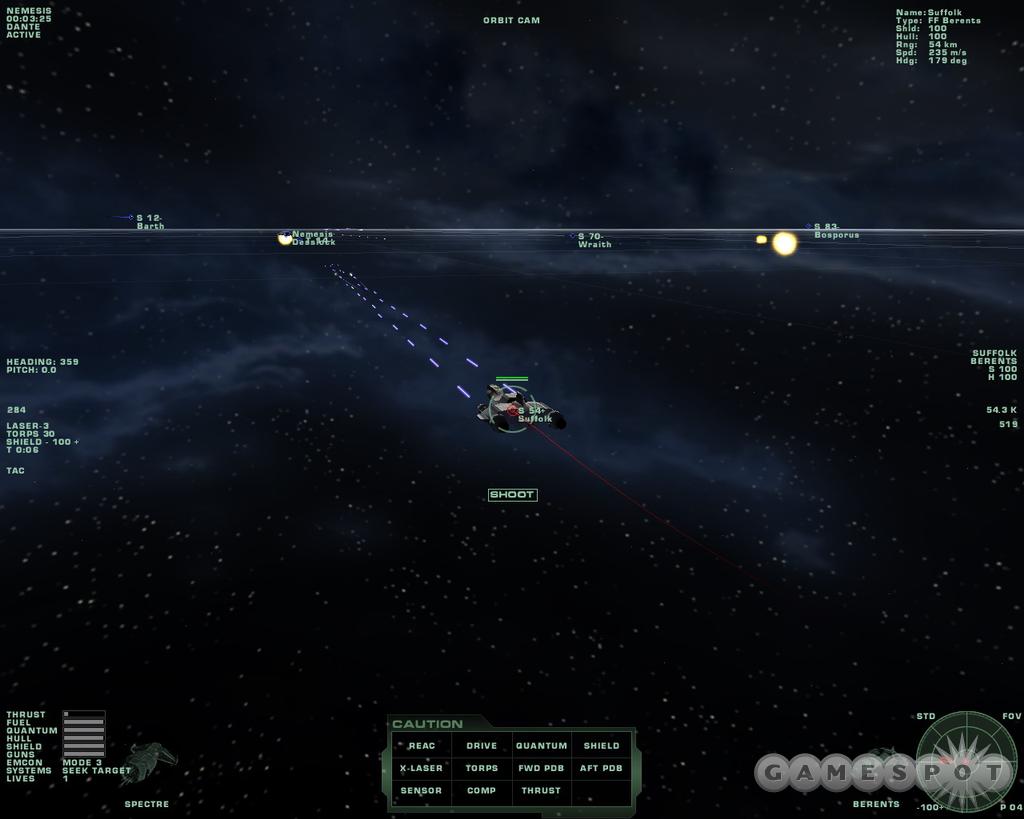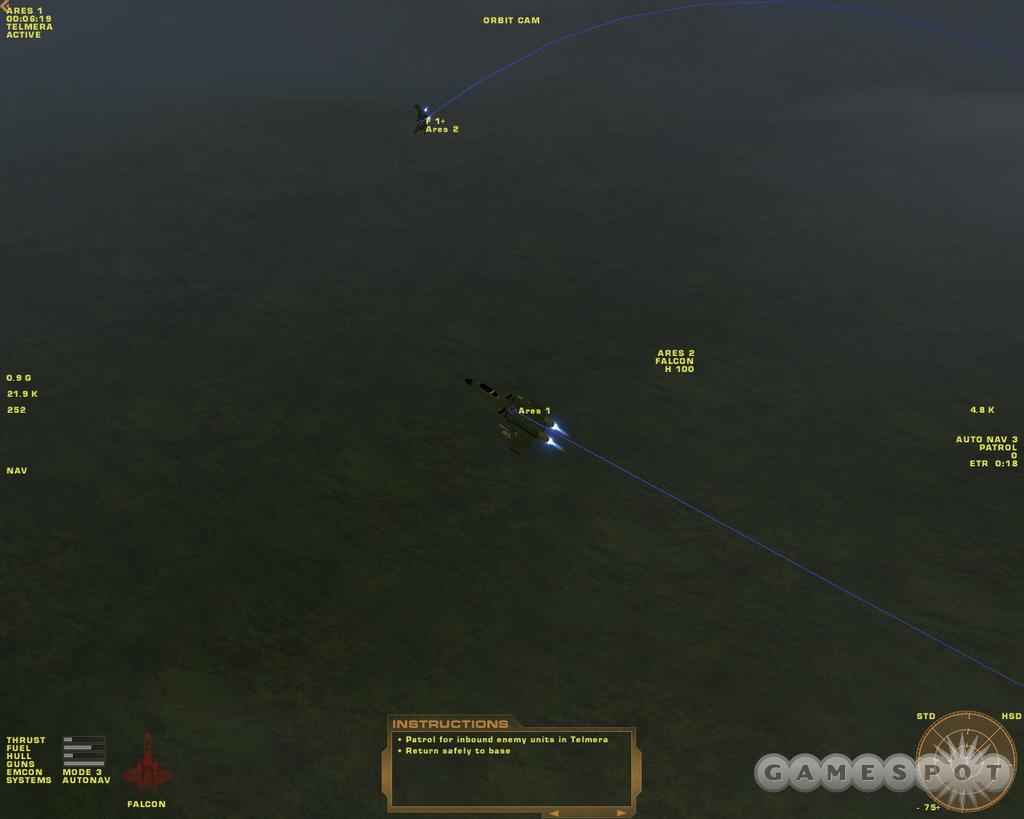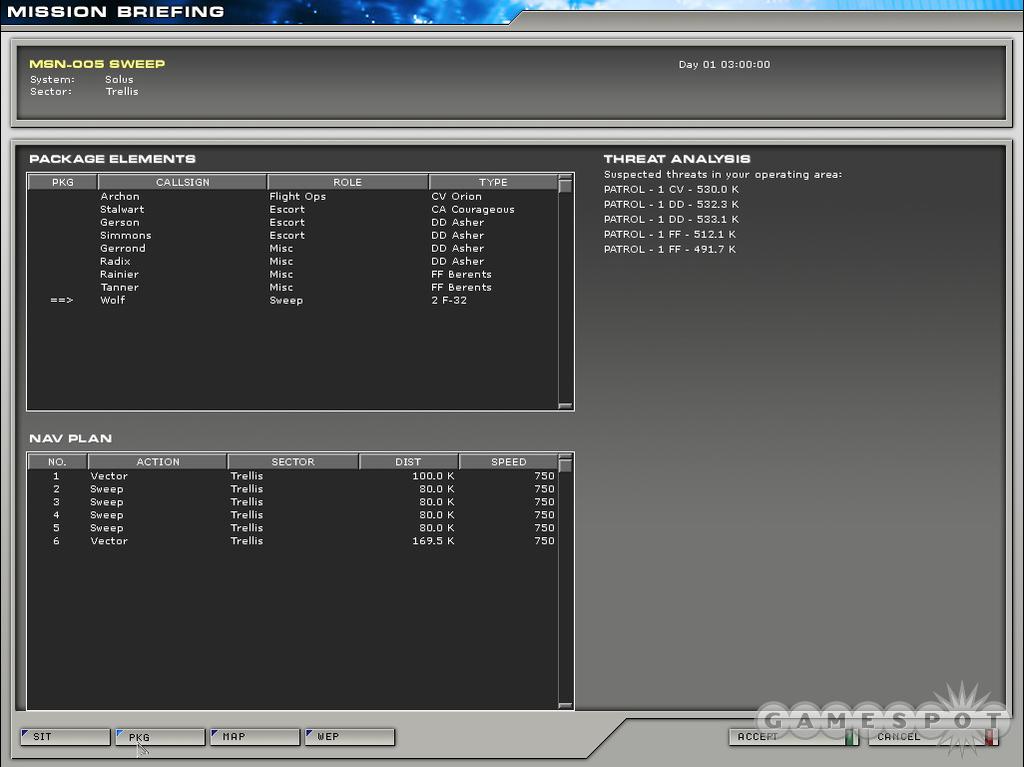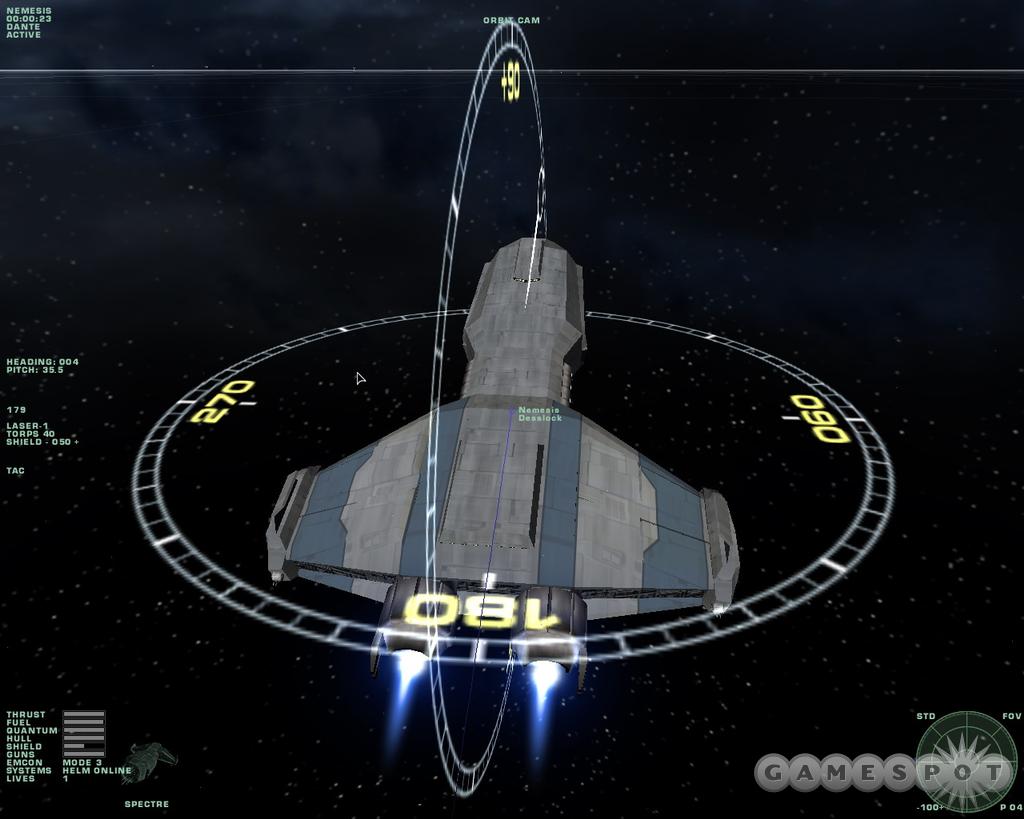Starshatter provides a welcome dose of innovation to a space sim genre that's been practically rendered extinct, but its originality ultimately fails to translate into a satisfying gameplay experience.

For most of the 1990s, space sims largely stuck to the formula of putting you into a small fighter craft and guiding you through a series of scripted missions. More recently, as the genre's popularity has faded, developers have attempted to rejuvenate commercial interest by aping the more open-ended, space privateer gameplay of even older classics such as Elite. Rather than copy this recent trend of focusing on exploration and trading, Starshatter sticks strictly to combat, but it provides a dynamic campaign and introduces flight sim and strategy game elements. Starshatter is essentially a rudimentary flight sim, a decent fighter-based space sim, and a simple real-time strategy game that lets you control capital ships. Each element of its hybrid gameplay package works relatively well, but none is singularly deep enough to offer a truly engaging experience.
Despite its ambitious design, Starshatter is largely the work of a single individual (Matrix Games picked it up for distribution solely online), and it's packed with user-friendly customization and modding options. You can opt to play the game with or without Newtonian physics, which cause your craft to indefinitely retain directional momentum, or you can have your ship automatically fire thrusters to partially compensate for those forces. You can choose to use traditional flight sim controls so that your craft will roll instead of turning when you push laterally on your controller (joystick, keyboard, or mouse), or you can control your ship entirely with a first-person, shooter-style mouselook setup. The heads-up displays can be heavily customized. There's also a variety of viewing perspectives, including a third-person perspective that's ideal for controlling capital ships as it effectively transforms the game into a real-time strategy game that resembles Homeworld.
Starshatter includes a mission and campaign editor, and it provides tools and instructions to let players add their own customized weapons, ships, planetary systems, and missions. While some aspects of Starshatter clearly highlight its limited production resources--graphics are respectable but not flashy, and sound and music are perfunctory--the game has been designed to make it relatively easy for motivated players to offer their own improvements. For instance, while the included mission briefings are displayed through text only, players designing their own campaigns can incorporate voice-recorded briefings. Starshatter deserves to be lauded for providing a comprehensive space sim toolkit in addition to an innovative game.
Starshatter's interface is also top-notch. In addition to displaying all relevant information in an organized and accessible fashion, the HUD interface is also interactive and lets you issue commands by mouse-clicking on displayed HUD readings. You can pause the game at any time to issue commands or to alter the perspective, which gives the game a much more strategic feel than most space sims. Instead of just barreling into combat and relying upon visible radar and targeting cues as in most space sims, you can pause and analyze a static battlefield from a heavily zoomed-out perspective to obtain a comprehensive picture of what's unfolding. This way you're less likely to overlook high-priority targets such as incoming torpedoes.

Yet these innovations belie the game's comparatively simplistic combat gameplay. Fighters are fragile since they lack shields and because missiles are extremely effective. As a result, instead of taking down enemy fighters in prolonged dogfights, you're far more likely to be successful against a group of foes if you attack with missiles at extreme range. The craft you control are just as vulnerable as those you're fighting against, which compels you to maintain modest mission goals instead of striving to heroically dispatch hordes of enemies. Once you run out of missiles, it's very difficult to survive for long against multiple opponents, so you're frequently forced to cut-and-run unless you're close enough to friendly forces to quickly obtain reinforcements.
To consistently succeed against groups of enemy fighters, you generally have to either take them out with missiles before they're close enough to attack you with guns, or catch them unaware or while they're engaging other ships. There is also only a handful of ship and weapon types, so most battles tend to unfold very similarly. While fighter combat may be more realistic as a result of the limited capabilities of your craft, its difficulty and the relatively small number of weapon and ship types also make battles less engaging.

Your character gains experience and rank by completing missions and scoring enemy kills. Once you reach sufficient rank, you'll be able to command capital ships and eventually carriers. Instead of directly maneuvering a capital ship, you designate where you want to go and the ship's heading will gradually change. From a practical perspective, this mechanic just means that there's a control delay between when you push a button on your joystick or mouse to change direction and when your ship actually responds, but it effectively conveys the feeling that you're commanding a more colossal vessel. The third-person perspective works particularly well for commanding capital ships, as useful radial dials conveniently indicate changes to your heading and you can easily point and click on targets or friendly fleet elements.
But capital ship combat is even duller than fighter combat, since your tactical options are even more limited. There are a variety of weapons at your disposal: you can fire missiles or torpedoes; you can use point defenses to block incoming projectiles; and you can use laser batteries that instantly hit targets in range. However, in practice you'll use all of these weapons simultaneously, and capital ship combat frequently amounts to just charging opponents and hoping that more of your torpedoes get through their point defenses than get through your own. It's virtually impossible to inflict beam weapon damage without being hammered by a similar onslaught. You can stack your success odds by trying to maneuver several of your capital ships within range of a single opposing one, and you can direct artificial intelligence-controlled fighters to join in the attack, but combat results depend far more on strategically selecting when to fight rather than tactics once engaged in combat. Since your maneuvering options in open space are fairly limited, capital ship combat just isn't very interesting.
The flight sim aspects of Starshatter are also simplistic. Within a planet's atmosphere, fighters can engage enemy fighters or bomb stationary ground targets. Terrain features are essentially nonexistent, other than target buildings and installations, and combat is very similar to space-based skirmishes, although you are required to keep moving to avoid gradually succumbing to the forces of gravity. Planetary battles are very similar to the rudimentary atmospheric battles in Wing Commander III and IV. These battles are an interesting inclusion that somewhat varies gameplay--however, they're too simplistic to be particularly entertaining and they're generally more frustrating than space-based combat.
Starshatter has four separate dynamic campaigns that track the history of a war between colonies. Dynamic campaigns have become an almost mandatory feature in flight sims, but they've only rarely been features in space sims. There's no building or resource management, so campaigns require you to gradually whittle away at the enemy fleets and bases using your own limited pool of resources. It's great to be able to inflict persistent damage on enemy forces in a series of connected missions, but overall campaign performance is too easily subject to sudden reversals as a result of single battles. That's particularly frustrating prior to being able to command capital ships, since your fleets can easily lumber into disadvantageous battles against larger forces that can quickly render earlier successes moot.

Collectively, Starshatter's deficiencies overpower its innovations. It has a great interface, it's replete with customization options, and it features dynamic campaigns, planetary battles, and the ability to control both capital ships and fighters. But the actual combat is somewhat minimalist and it lacks tactical depth. That dearth is even more evident when playing the game in multiplayer. There are only four included multiplayer missions, and three of them are small skirmishes that are resolved extremely quickly. Starshatter's included editor and mod-friendliness offer additional value and may allow dedicated players to address some of its shortcomings. However, judged strictly on its own merits, Starshatter is more refreshingly novel than entertaining.